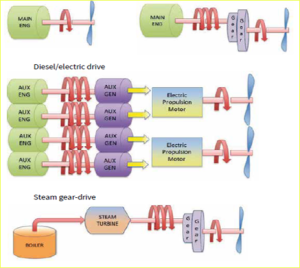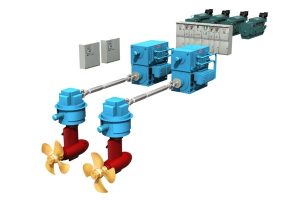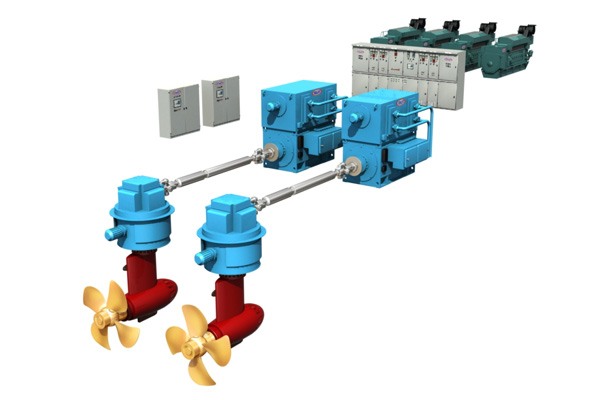The propulsion of ships is a critical aspect of maritime engineering, encompassing the systems and technologies that propel marine vessels across water. The evolution of ship propulsion systems is marked by innovations designed to improve efficiency, reduce environmental impact, and enhance the maneuverability and speed of vessels. This article explores the various types of ship propulsion systems, their underlying technologies, and the emerging trends that are shaping the future of maritime transport.
1. Traditional Propulsion Systems
1.1 Steam Turbines
Steam turbines were once the mainstay of ship propulsion, particularly for large ocean-going vessels like transatlantic liners and aircraft carriers. Powered by steam generated from burning fuel, steam turbines are known for their robust performance and capacity to handle high power outputs. However, due to their inefficiency at lower operating speeds and significant maintenance requirements, steam turbines have largely been phased out in commercial ship designs, except in some LNG carriers and specialized military vessels.
1.2 Diesel Engines
Diesel propulsion remains the most common form of propulsion for modern ships, prized for its efficiency and reliability. Diesel engines can be classified into two main types: two-stroke and four-stroke engines, each suitable for different types of operations. Two-stroke engines are generally more powerful and are used in large cargo ships and tankers, while four-stroke engines are preferred in smaller vessels due to their greater flexibility and efficiency at variable speeds.

2. Advanced Motor Technologies
2.1 Electric and Hybrid Systems
As environmental regulations become stricter, there is an increasing shift towards electric and hybrid propulsion systems. These systems use electric motors powered by batteries or a combination of batteries and traditional internal combustion engines. Hybrid systems are particularly advantageous for reducing emissions in sensitive areas, improving fuel efficiency, and lowering noise levels. Electric propulsion is also highly maneuverable, making it ideal for cruise ships and ferries that require frequent docking.

2.2 Gas Turbines
Gas turbines are used primarily in fast ships such as naval vessels, ferries, and yachts. Similar to jet engines, they burn gas or liquid fuels to create a high-speed jet of exhaust gases that drive the turbine and produce thrust. Gas turbines are appreciated for their high power-to-weight ratio and quick start-up times but tend to be less fuel-efficient than diesel engines for most commercial applications.
3. Renewable and Alternative Propulsions
3.1 Wind-Assisted Propulsion
Modern versions of sail technology, such as rotorsails and kites, are being explored to enhance fuel efficiency in cargo ships. These technologies harness wind power to assist the main engines, thereby reducing fuel consumption and emissions. For instance, rotorsails use the Magnus effect to generate forward thrust from lateral wind, effectively providing auxiliary power to traditional engine systems.
3.2 Solar and Hydrogen Fuel Cells
Solar panels can also be used on ships to power electrical systems or in conjunction with battery storage to provide auxiliary propulsion. Meanwhile, hydrogen fuel cells are emerging as a promising zero-emission technology. They convert hydrogen into electricity, powering electric motors without combustion, thus eliminating emissions. However, the adoption of hydrogen fuel cells in shipping is contingent on advancements in hydrogen storage and fuel cell durability.
4. Nuclear Propulsion
Primarily confined to military applications, particularly in submarines and aircraft carriers, nuclear propulsion offers the capability of several decades of operation without refueling, coupled with potent energy output. Civilian use remains limited due to regulatory, safety, and cost concerns.
Future Directions and Challenges
The future of ship propulsion is likely to be dominated by further innovations in electric and hybrid technologies, along with an increased emphasis on sustainability. Future designs will need to balance operational efficiency with stringent environmental standards, requiring ongoing research and adaptation. Innovations in digitalization and automation will also play pivotal roles in optimizing propulsion systems for better fuel management and predictive maintenance.
From steam turbines to advanced electric and hybrid systems, ship propulsion technologies have evolved dramatically, driven by the need for efficiency and environmental stewardship. As the shipping industry continues to navigate the demands of global trade and environmental regulations, the propulsion systems of ships will remain a key area of technological development and investment. These advancements will not only improve the performance and efficiency of marine vessels but also contribute significantly to global efforts to combat maritime emissions and enhance the sustainability of the world’s shipping fleets.


Good !